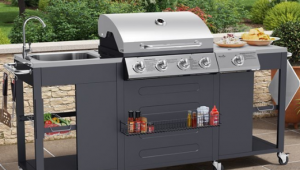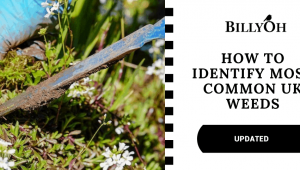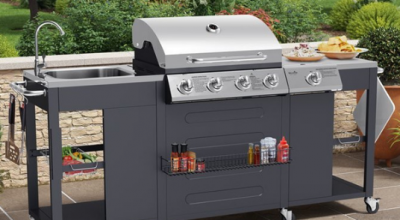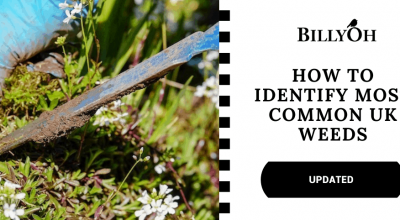Jump to:
When it comes to unwanted guests, rats top the list of troublemakers you’d rather avoid. Unfortunately, they have a knack for invading sheds and outdoor furniture. This is especially true during the winter months.
Problem 1.) The mere sight of them scurrying around your house is enough to cause frustration. Problem 2.) Their elusive nature makes it difficult to pinpoint their hiding spots!
Dealing with a rat or mouse infestation can turn your home life into a nightmare. Their destructive tendencies include gnawing through walls, insulation, and electrical wiring. To make matters worse, rats carry infectious diseases that pose health risks.
But fear not! In this guide, we’ve gathered a selection of simple yet highly effective home remedies you can try. Prepare to bid farewell to rats and mice and create a haven of tranquillity in your home!
Rats

Most of us can identify rats at first glance. But let’s delve deeper into the intriguing world of these mischievous rodents!
Rats, belonging to the same rodent family as mice, shrews, and moles, are medium-sized creatures. Originating from Asia and Australia, they’ve successfully dispersed across the globe.
Measuring about 5 inches, these small creatures are notorious carriers of diseases. Moreover, their adaptability allows them to thrive in various habitats. This makes ‘controlling them’ a daunting task.
Rats also have a knack for thriving in environments abundant in these three key elements. As long as humans provide these essentials, their populations will likely flourish. These include the following:
1. Food sources

Rats are opportunistic eaters, which means they’ll devour anything in sight. Any food supplies in your home, including bird feed and pet food, are vulnerable to rat attacks. They’re notorious for scavenging through woodpiles, compost bins, and heaps, too. And don’t forget the household waste and food scraps!
2. Water sources
Surprisingly, rats can survive for over a month without drinking water. This is because they obtain sufficient water from the foods they consume. However, when the need arises, they’ll seek out water sources like drains and water pipes.
3. Shelter

Rats are incredibly adaptable and can live in various habitats, including the wild. They seek shelter in weeds, grasses, and plants, but they also take refuge in gardens and backyards. They also tend to nest in seldom-used corners of homes, behind walls, and under furniture.
Evidence of Rats: Signs to Look For
To identify potential rat infestation in your home, keep an eye out for the following signs:
Sign #1: Droppings and smears
Rats leave behind distinctive droppings as they navigate through your home. These droppings are typically small, dark, and pellet-shaped. Moreover, they’re commonly found along rat pathways near walls. Rats may also leave smears and smudges on surfaces as they travel.
Sign #2: Unpleasant odours and noises
The presence of rats often comes with a strong, unpleasant ammonia-like smell. Furthermore, rats are not the quietest of creatures. If you hear squeaking, hissing, or chattering noises, chances are it’s them!
Sign #3: Damaged materials and equipment
Rats’ destructive behaviour is evident through the damage they cause. Look for chewed electrical cords, gnawed furniture, containers, or papers. They also leave behind droppings and urine, increasing the risk of disease transmission.
Sign #4: Occupying wall spaces
Detecting rats behind walls can be tricky, but certain signs may show their presence:
- Strange sounds like scurrying or running noises coming from within the walls.
- Piles of droppings behind stoves, in the basement, attic, or corners of your home.
- Smudges along the walls, which could be dirt, grease, or a combination thereof.
Note: If multiple signs are present, it’s best to contact a pest management company for help.
Natural Home Remedies
Understandably, you want to eliminate them as quickly as possible. But it’s also important to note that you can achieve rat extermination without relying on poison.
Our team of experts has compiled a list of natural methods to give you ideas. Explore the following remedies below and take control of your rat infestation effectively:
1. Onion

The strong odour of onions serves as a non-toxic and natural deterrent for rats. Just as humans find the smell unpleasant, rats and mice share the same aversion. It’s a simple yet effective way to keep them at bay.
Here’s what you can do: Cut a slice of onion and place it in areas where rats frequent. Remember to replace it once it becomes rotten, as the potent scent diminishes.
2. Essential oils

Harness the power of essential oils to eliminate rats from your home naturally. Several essential oils have proven effective in repelling these pests, including:
- Peppermint. The strong minty aroma of peppermint oil acts as a powerful rat deterrent.
- Citronella. Known for its use in repelling insects, citronella oil can also be effective against rats.
- Eucalyptus. Rats highly dislike the distinct scent of eucalyptus oil.
To use essential oils, dilute them in a 5-10% concentration and place them in areas where rats are active. Note: Exercise caution if you have cats or dogs, as some essential oils can be toxic to pets.
3. Steel wool

Another effective method to prevent rats from gaining entry is by using steel wool. This versatile material can be used as a physical barrier to seal off their access points.
Rats will find it challenging to chew through steel wool. This will ultimately deter them from passing through the openings. Finally, you can fortify your home and create an effective defence against these persistent rodents!
4. Mothballs

(Image Credit: Wikimedia Commons)
Mothballs make a reliable and natural method to eliminate rats. Strategically place them in areas that could potentially serve as rodent habitats (as if they stand a chance!). You can easily find mothballs in supermarkets, and they’re simple to use.
Note: Exercise caution when distributing them throughout your house. The smell can range from unpleasant to harmful for humans and other animals. Also, protect your hands by wearing gloves when handling mothballs.
5. Dried cat litter (or snake’s if possible!)

Cats and snakes are natural predators of rats. The presence of their scent can discourage rats from returning to a certain area. To utilise this method, you can purchase dried cat or snake litter from a pet store or zoo. Mislead the rats by strategically placing the litter in the holes or areas where they reside.
Over time, they’ll avoid these spots due to their instinctual fear, ensuring they won’t return to your home. Hopefully!
Round-up
The good news is that you can effectively get rid of rats in your home without resorting to killing them. Yes, you read that right! You can eliminate them without having to touch them directly.
We hope this guide has provided you with valuable insights on how to achieve it in a natural way. By implementing these techniques, you can bid farewell to rodents once and for all!
Shop Garden BuildingsFAQs
How do I get rid of rats without poison?
Simple: use natural home remedies. To give you a quick overeview, here are some of the natural rat repellents you can try:
- Onion slices (they hate the smell)
- Essential oils (e.g. peppermint, citronella, and eucalyptus)
- Owl's feather (they're scared of predators)
- Human hair (they hate it)
- Ammonia (they don't like the smell)
- Steel wool (to block their holes)
- Dried cat or snake litter (they're scared of predators)
- Mothballs (they don't like the smell)
What is the easiest way to get rid of rats?
Rat traps are known for being the easiest way to kill rats. All you have to do is to trick the rodents by offering them some food inside the trap.
A great example of this is a snap trap which can kill humanely upon snapping.
What attracts rats to your house?
The number one thing that attracts rodents is food supplies. This could be your leftovers, pantry staples, and pet food.
The second would be your home in general, basically. Rodents tend to seek shelter and warmth during the cold season.
Your home's attic, corners, and behind walls are their primary targets.













What do you think ?